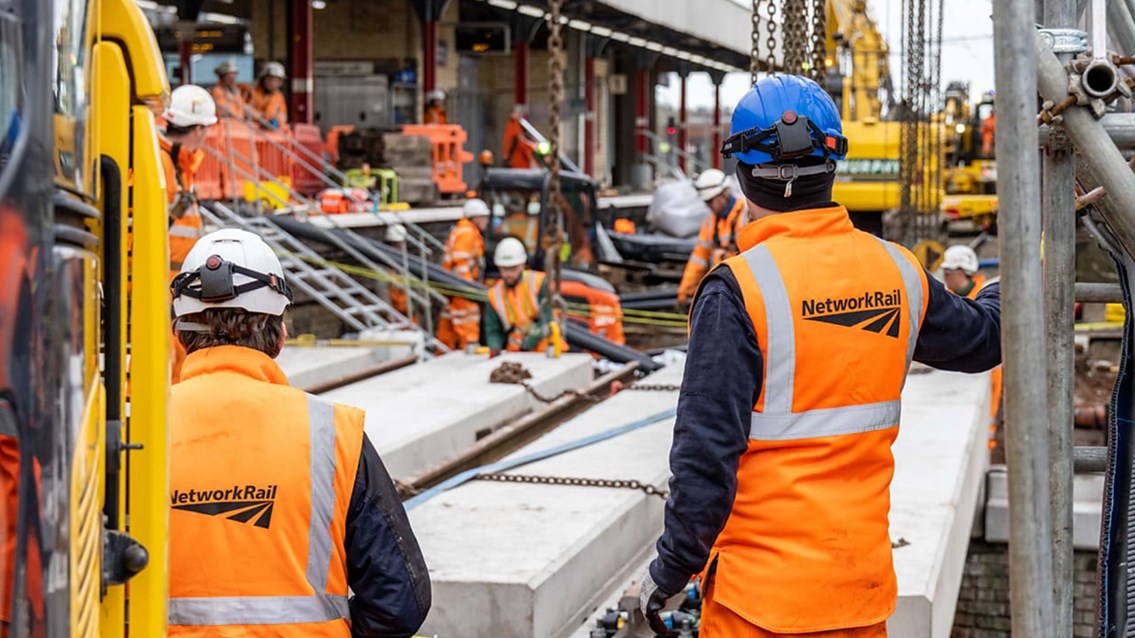 Network Rail marks its sixth, five-year funding period – Control Period 6 (CP6), which started on 1 April 2019 and will finish on 31 March 2024. During this time the renewals expenditure was GBP 18.7 billion (EUR 21.8 billion) of which GBP 16.8 billion represents renewing core assets.
Network Rail marks its sixth, five-year funding period – Control Period 6 (CP6), which started on 1 April 2019 and will finish on 31 March 2024. During this time the renewals expenditure was GBP 18.7 billion (EUR 21.8 billion) of which GBP 16.8 billion represents renewing core assets.
Network Rail also delivered GBP 11.6 billion of enhancements, the Department for Transport has funded enhancements totalling GBP 8.6 billion, while Transport Scotland funded enhancements totalling GBP 800 million, such as HS2 making up the difference of GBP 2.2 billion.
In Control Period 6, Network Rail replaced 3,271 km of track and refurbished 2,029 km and almost 40 million trains ran on the British network.
In addition, Network Rail made efficiency savings of GBP 4 billion over the five years, an additional of GBP 500 million of savings on top of the original GBP 3.5 billion five-year efficiency programme – exceeding the efficiency targets set by Office of Rail and Road.
“We started that process right at the beginning of the period as Network Rail devolved into five regional business, themselves split into 14 routes, to better respond to, and work with, our train operating colleagues, the Welsh and Scottish Governments, combined and local authorities and funders. It put us in a strong position to respond to the enormous change that hit us with the pandemic, and gave us the flexibility to bounce back afterwards,” Network Rail chief executive Andrew Haines said.
Despite the very challenging circumstances during the five years of CP6, the company’s regions and routes delivered many notable improvements for passengers. For the Elizabeth Line, Network Rail played a role in the delivery of one of this country’s most notable railway projects. The route is known best for its tunnels but 75% of the 100km line is above ground. Network Rail was responsible for the design, development and delivery of the parts of the route that are on the existing railway network, through outer London, Berkshire and Essex, not just in CP6 but across CP5 (2014-2019) too. Its passenger numbers are already one of the biggest success stories the railway has enjoyed – with over 155 million journeys in its first year. The company built new bright, spacious ticket halls at a number of stations, lifts were installed at many stations to help deliver step-free access at every Elizabeth Line station. In addition, Network Rail managed the construction of new junctions, both flyovers and dive-unders, power supply upgrades and longer platforms to accommodate the 200m long trains.
Regarding regional projects, Network Rail has completed a number of programmes in Eastern region, including the electrification to Corby, Soham new station, track replacement, tunnel reopening and two lines at King’s Cross. In North West & Central projects included Stalybridge remodelling, Commonwealth Games in Birmingham, opening of Birmingham New Street signalbox, Iconic Ribblehead Viaduct repaired, Trent Valley upgrade work. In Scotland, Network Rail rebuilt Glasgow Queen Street, remodelled Carstairs to improve reliability and flexibility for passengers and freight, opened new stations, electrification of the Glasgow Central to Barrhead line and renewed Argyle Line. The Southern benefitted brighter and better Gatwick Airport station, the completion of Southampton upgrade, and Feltham and Wokingham resignalling, as the Victoria resignalling. On Wales and Western region, regular passenger services returned at Okehampton after 50 years of closure, the Dawlish sea wall and Barmouth Viaduct were rebuilt, Ebbw Vale and Newport connected and Severn Estuary Line reopened.
Share on:



